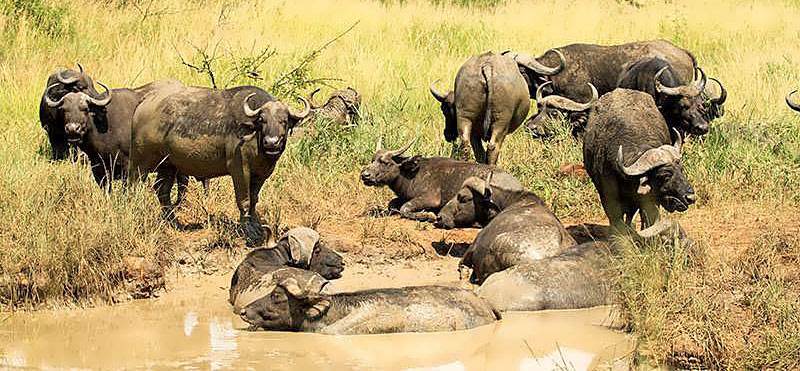Kruger National Park Eco Ranger
Kruger National Park Eco ranger tour is a unique and exciting experience. A fantastic opportunity to become a ranger in northern Kruger National Park. This section of the Park is remote, wild, diverse and scenically attractive.
Highlights include animal tracking, big 5 game viewing, bush survival skills and sleep outs in Kruger Park.

Kruger National Park Eco Ranger
This course is designed to be a genuine learning experience coupled with amazing opportunities to enjoy big 5 game viewing.
Courses are run in remote wilderness areas of Kruger National Park from bush camps.
Aspects covered during your stay will be looking into animal behaviour and the art of animal tracking.
Bird and tree identification also form an important part of the course. Also covered will be ecology and geology as well as stargazing and bush survival skills.
Rates 2023
ZAR 28 945 pps
7 day adventure tour
group size 8
departures on
selected Saturdays
Tour Overview
duration : 7 days / 6 nights
Start / end location : Johannesburg, Gauteng, Hoedspruit, Limpopo
Meals: 6 breakfasts, 5 lunches and 6 dinners
Departures: Rosebank hotels
±05h00 / Sandton hotels ±05h30
Language : English
Accommodation : 3 & 4 star game lpdges and camp
Vehicle: luxury sedan or minibus and open safari vehicle
Kruger National Park
Without doubt Kruger Park is a premier game viewing destination with an estimated 1500 lion, 17 000 elephants as well as 48 000 buffalo and 1 000 leopards.
But let’s take a look at Kruger’s vegetation.
Boasting some 336 tree species, the most common are the baobab, knob thorn, natal mahogany, leadwood and marula.
One of my favourites is the sausage tree (kigelia africana).
The fruit is unmistakable with its long and cylindrical form (up to 50cm long) and 10cm in diameter and a greyish brown colour.
The fruits are not edible but are eaten by baboons and bushpigs.
Elephants and kudu will eat the leaves and the flowers are enjoyed by the nyala and primates.
Marula is another tree prevalent throughout the park. A large variety of wildlife will eat the fruit and leaves.
